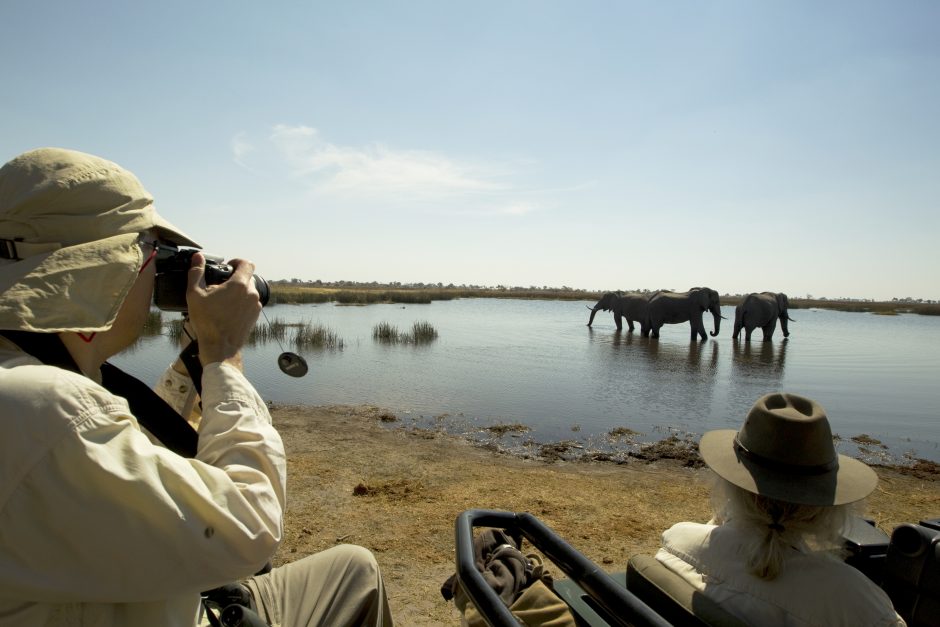Wildlife Photography Safari in Botswana: Capture the Wild
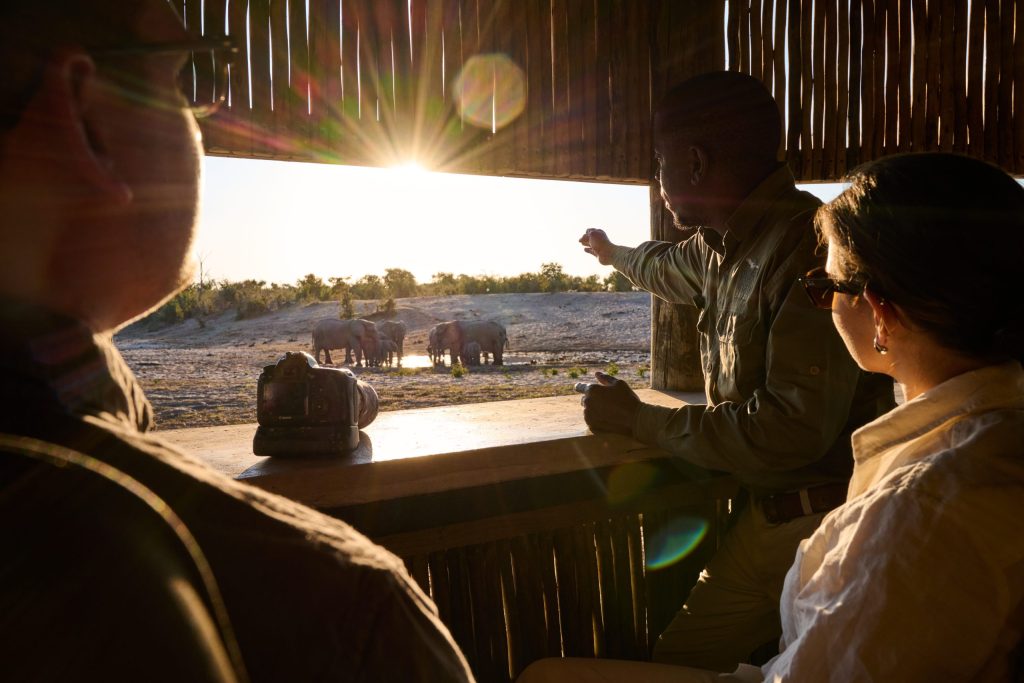
The landlocked country of Botswana is a boon for wildlife enthusiasts. Since the advent of wildlife photography safaris in the 1980s, the desire to capture the majesty of this country’s diverse fauna and flora through a camera lens has flourished. By highlighting key players and innovative approaches, this blog showcases the prosperous opportunities available to capture the beauty of Botswana’s wildlife while supporting conservation efforts.
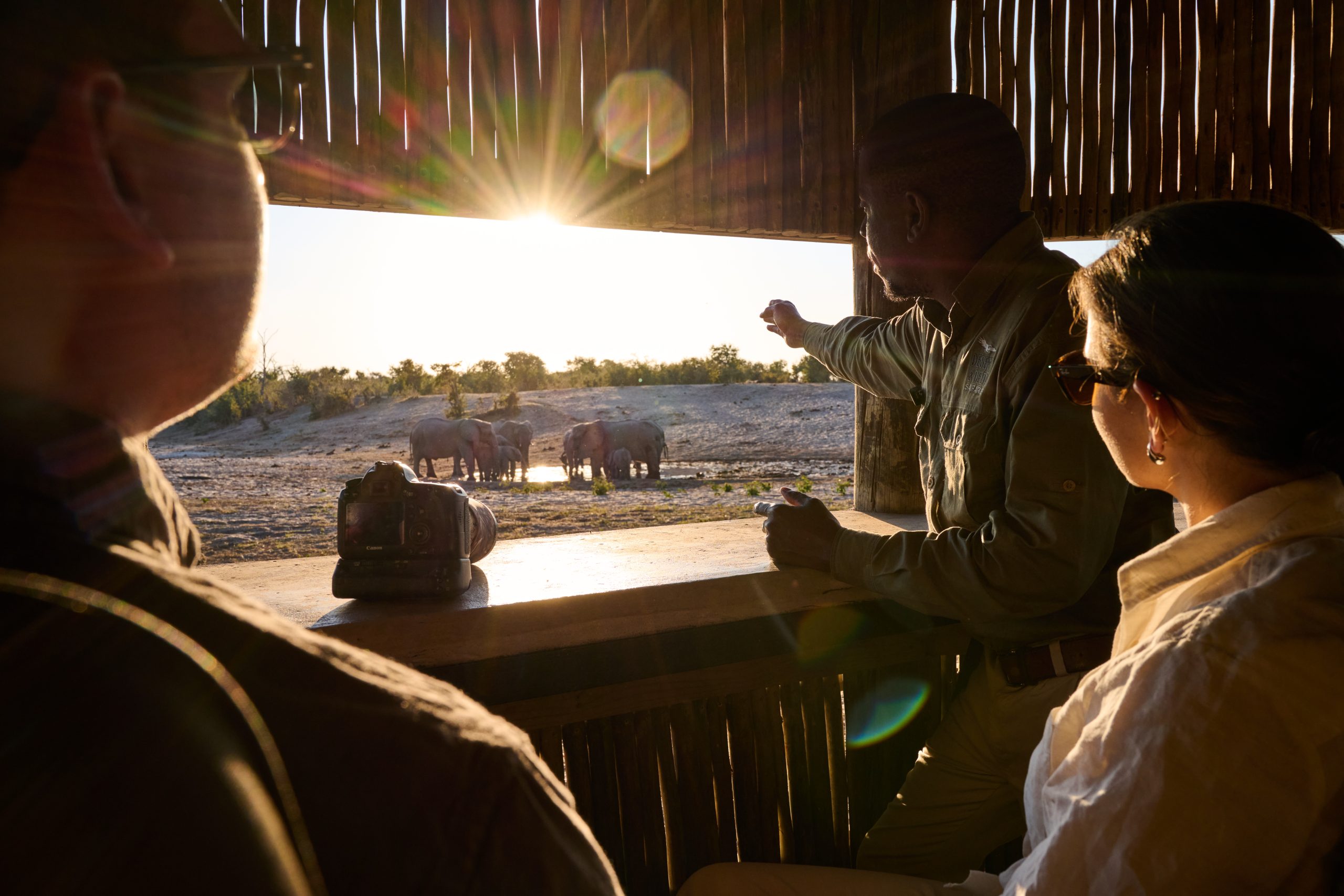
Get the best seat for a wildlife photography safari in Botswana, Image Credit: Savute Safari Lodge
Painting With Light
I’ve always held a keen interest in photography. However, it has always intimidated me somewhat. There’s more to the craft than meets the eye; some people have a knack for framing a scene. Over the years, thanks to my career in travel that has supplied a cornucopia of awe-inspiring photo opportunities, many of my most treasured snaps have been in the wilds of Botswana.
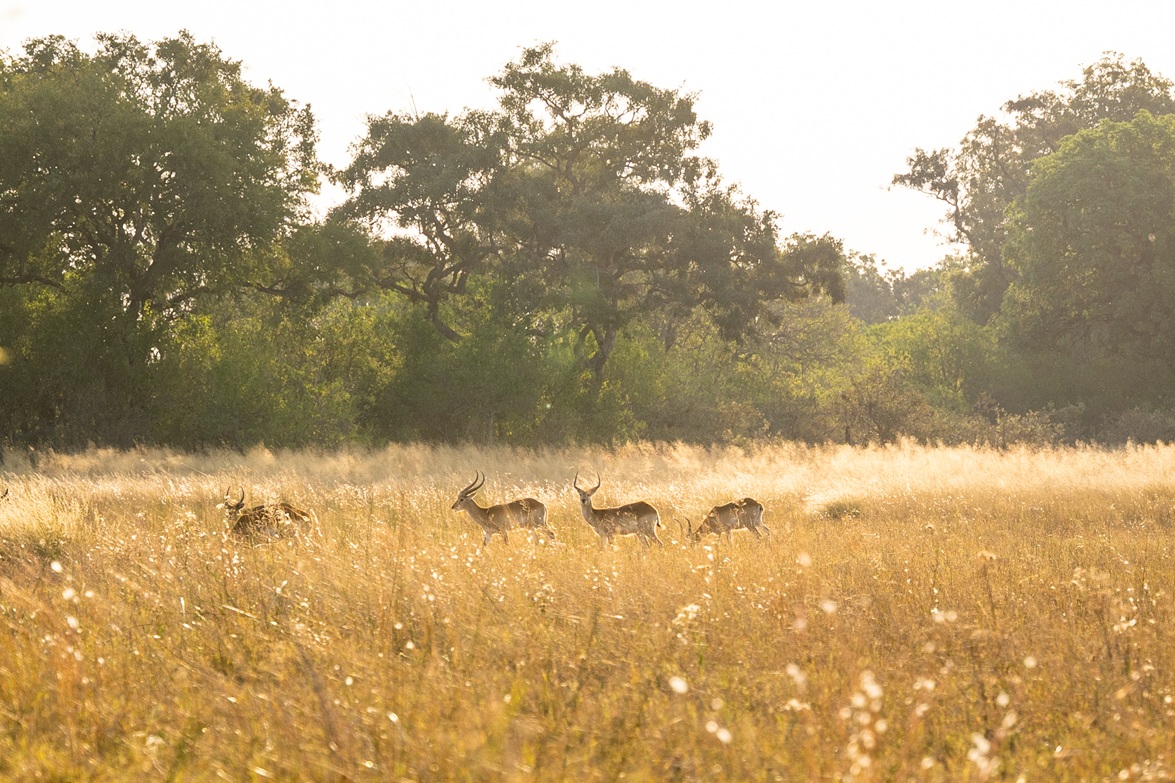
Soft morning lighting makes for stunning wildlife photography, Image Credit: 4 Rivers Camp – Kwando Safaris
Camera Clicks for Conservation
This niche interest sparked a tourism industry revolution with camps, lodges, and safari outfits catering to the needs of discerning travellers. They’ve built the infrastructure and created opportunities for capturing stunning images of the continent’s iconic wildlife, from the serene Okavango Delta to the parched Kalahari Desert.
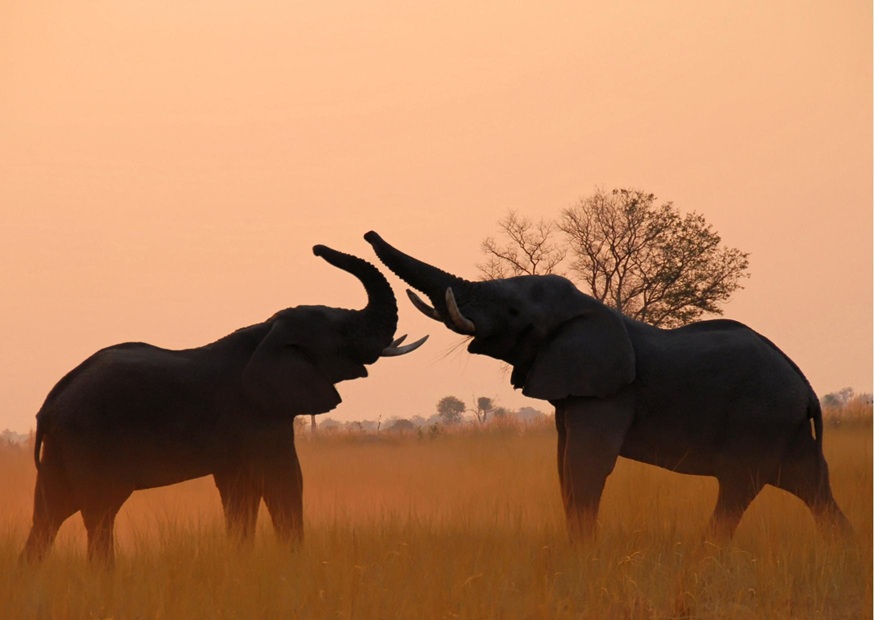
Two elephants photographed at sunset, Image Credit: 4 Rivers Camp – Kwando Safaris
Pioneers of Botswana’s Photographic Safari Industry
Operating a safari company in the wilderness brings unique challenges. It’s an undertaking reserved for the bravest, most spirited characters armed with wit, tenacity, know-how, passion and a dream big enough to drive them onward against the odds.
Some of the key players who have carved a niche in this market in conservation tourism and who cater to photographic tourism include the following.
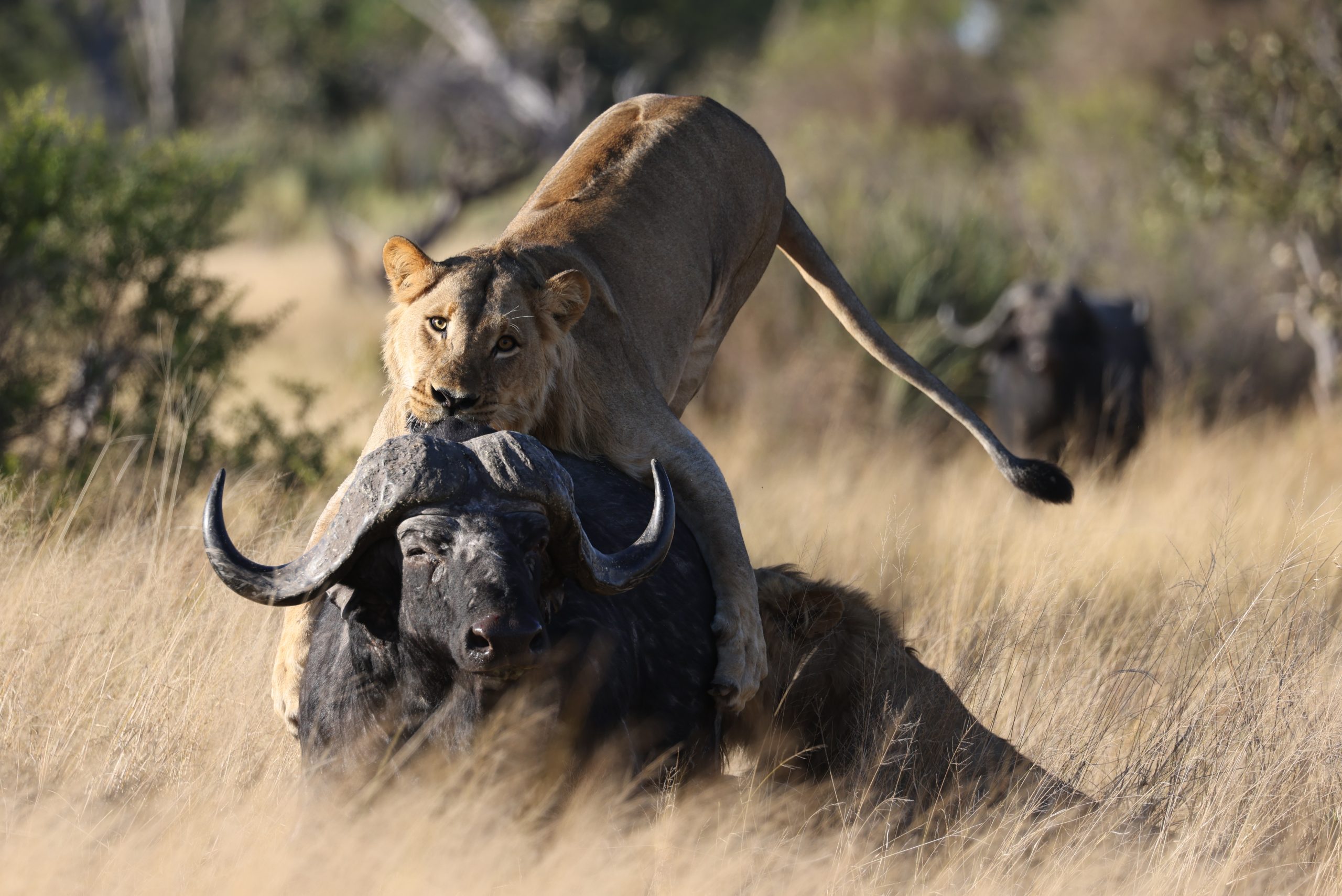
Capture all the drama and action that unfolds in the African bush, Image Credit: 4 Rivers Camp – Kwando Safaris
Wilderness Safaris
Wilderness Safaris’ conservation journey spans four decades. Initiated by a couple of visionaries in the early 1980s, they followed their dream into the watery wonderland of the Okavango Delta. The enterprise has grown and is now a listed company operating safaris in Botswana, Namibia, Tanzania, Rwanda, South Africa, Zambia, and Zimbabwe.
Guests can commune with nature in Africa’s wild spaces on land in hides, walks, game drives or on water via canoes or boats or in hot air balloons or helicopters. With some of the most beautiful concessions in Botswana, their accommodation ranges from pared-down explorer-style camps to design-led, upscale camps and lodges with a price point to match. Select camps provide guests with high-quality cameras for use on game drives and wildlife hides, enhancing the guest experience.
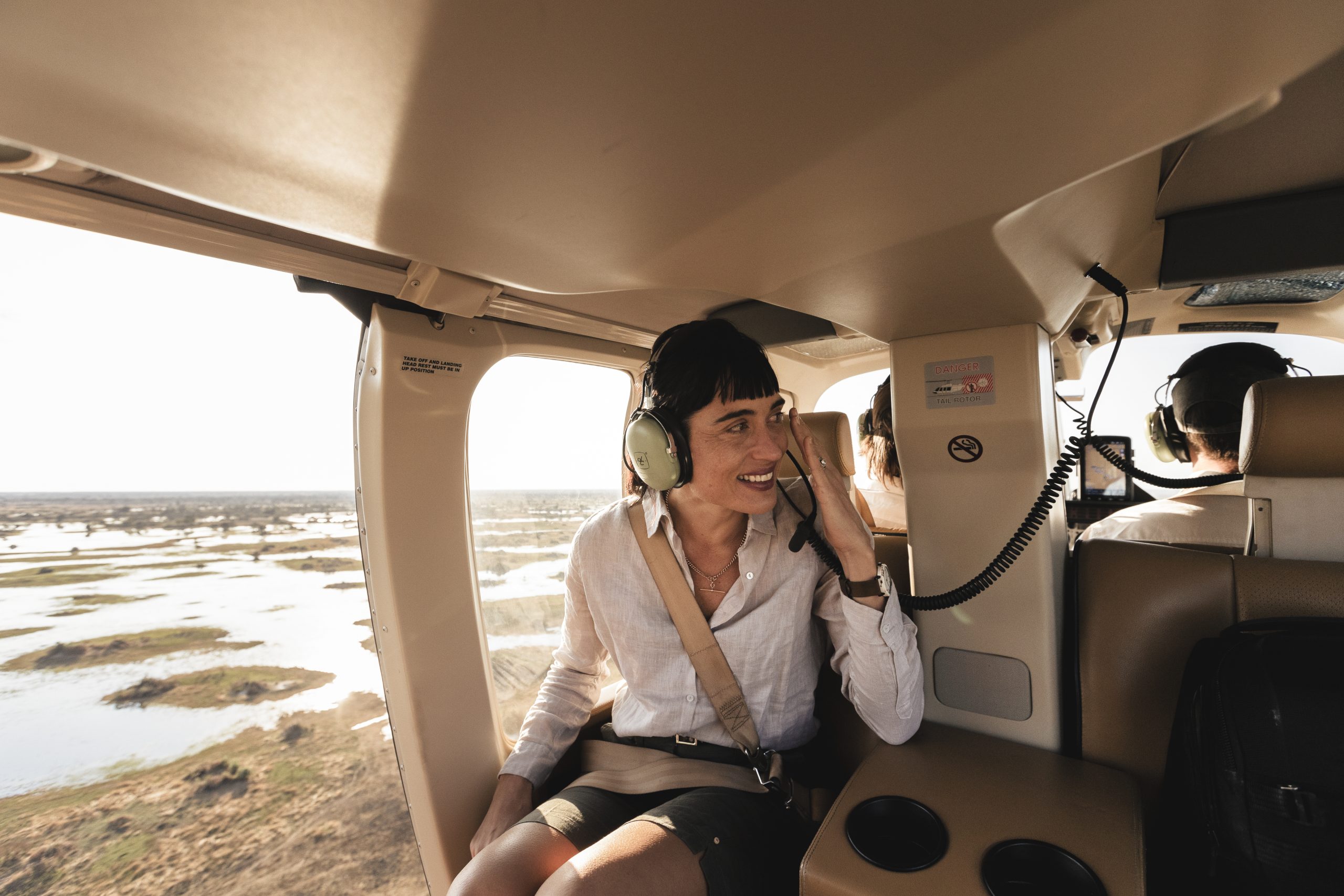
See Botswana from a bird’s-eye view, Image Credit: Wilderness Little Mombo
Great Plains Conservation
Dereck and Beverly Joubert are stalwarts of the African tourism industry, perhaps best known for their work as wildlife filmmakers; epic documentaries The Last Lions and Eternal Enemies instantly come to mind. Together, they co-founded Great Plains Conservation, focusing on preserving Africa’s wilderness while providing luxurious and immersive safari experiences.
Their Réserve-Collection safari camps include professional camera bodies enabling guests to capture their thrilling safari experiences and download them to take them home. Also, revenue generated from stays at these camps feeds into the Great Plains Foundation causes.
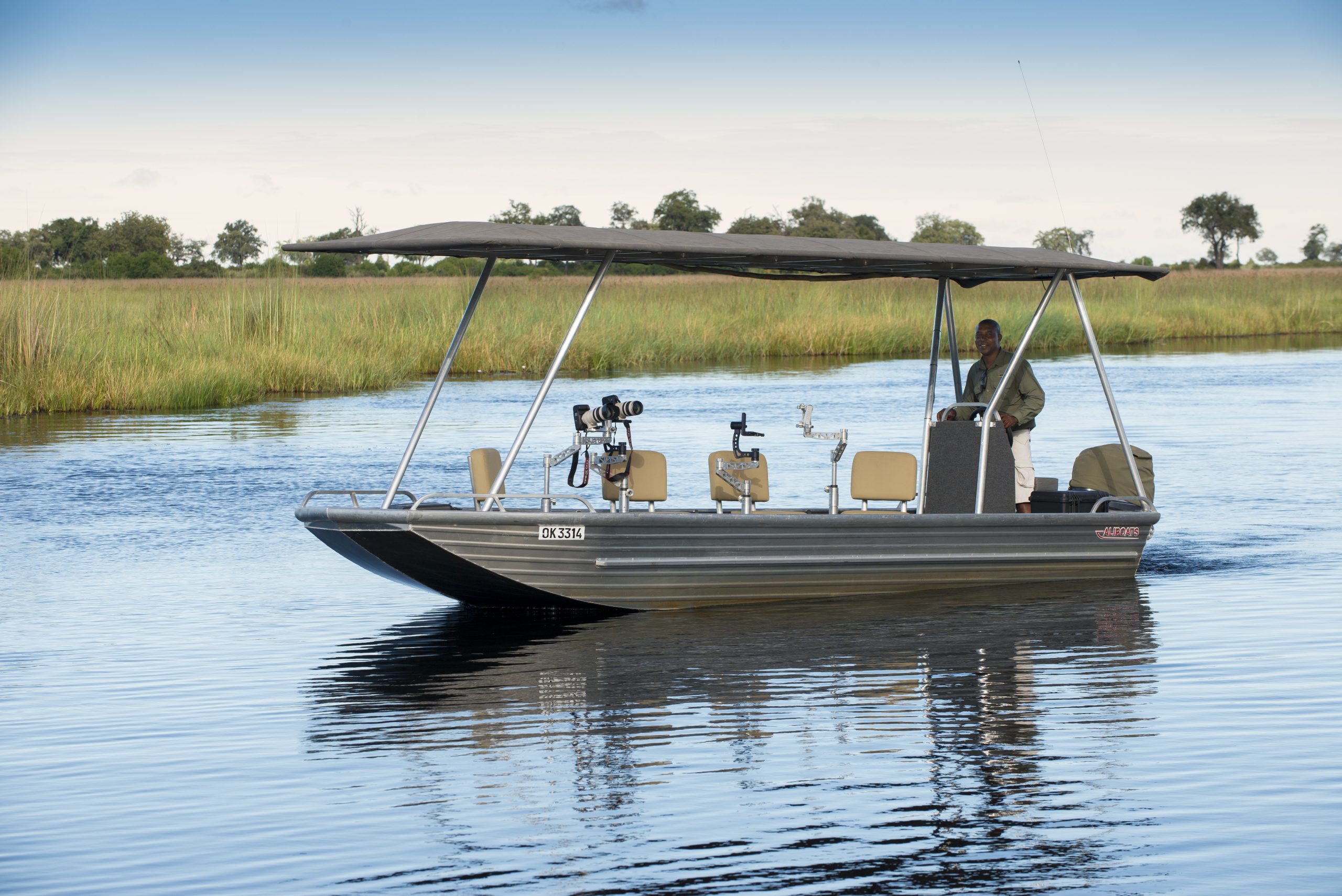
Your dream wildlife photography safari awaits in Botswana, Image Credit: Duba Plains Camp
Pangolin Photo Safaris
Intrepid entrepreneurship duo Toby Jermyn and Gerhard ‘Guts’ Swanepoel launched Pangolin Photo Safaris to take the photography tourism industry to the next level. The Pangolin Chobe Hotel, a unique gallery-style small hotel, serves as the inspired launchpad for their Chobe-based guided photographic safaris.
They provide professional category zoom lens cameras for guests to use during game drives and boat activities with small group tuition delivered by resident photography guides. Guests can download their photos to take home – their thriving community of photographers benefits from regular online tutorials, photography tips and regular photographic competitions.
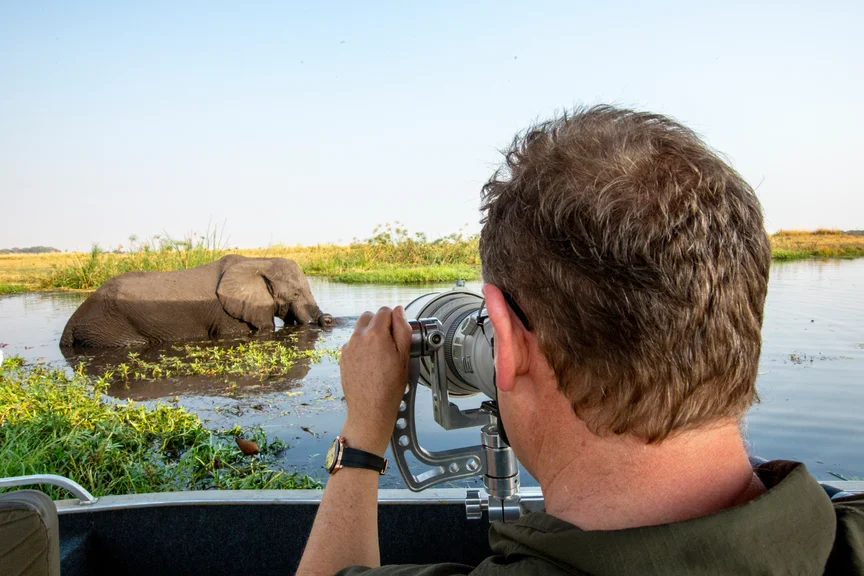
Stabilisation is key in getting that perfect, crisp image, Image Credit: Pangolin Photo Safaris
Impact Safaris Reframed
Photographic safaris offer numerous benefits, especially when travelling out of season:
- Provide unique opportunities to capture wildlife in different seasonal settings, often with fewer tourists. In Botswana, the rainy season is from December through March, providing lush green backgrounds against which to photograph wildlife and birds.
- Photographic hides are an excellent way to lower your carbon footprint on safari: swap a game drive with a hide experience, thereby minimising environmental impact and allowing photographers to observe incognito wildlife.
- Photographic tourism stakeholders support local economies and help fund vital conservation efforts, ensuring the protection of wildlife and habitats for future generations. Wilderness Safaris’ Children In The Wilderness, Great Plains Foundation and Pangolin Africa are good examples.
- Provide a unique platform for showcasing the beauty, diversity, and plight of Africa’s wildlife that deserves conservation. Photography is a stunning storytelling tool that can grab the attention where it’s needed.
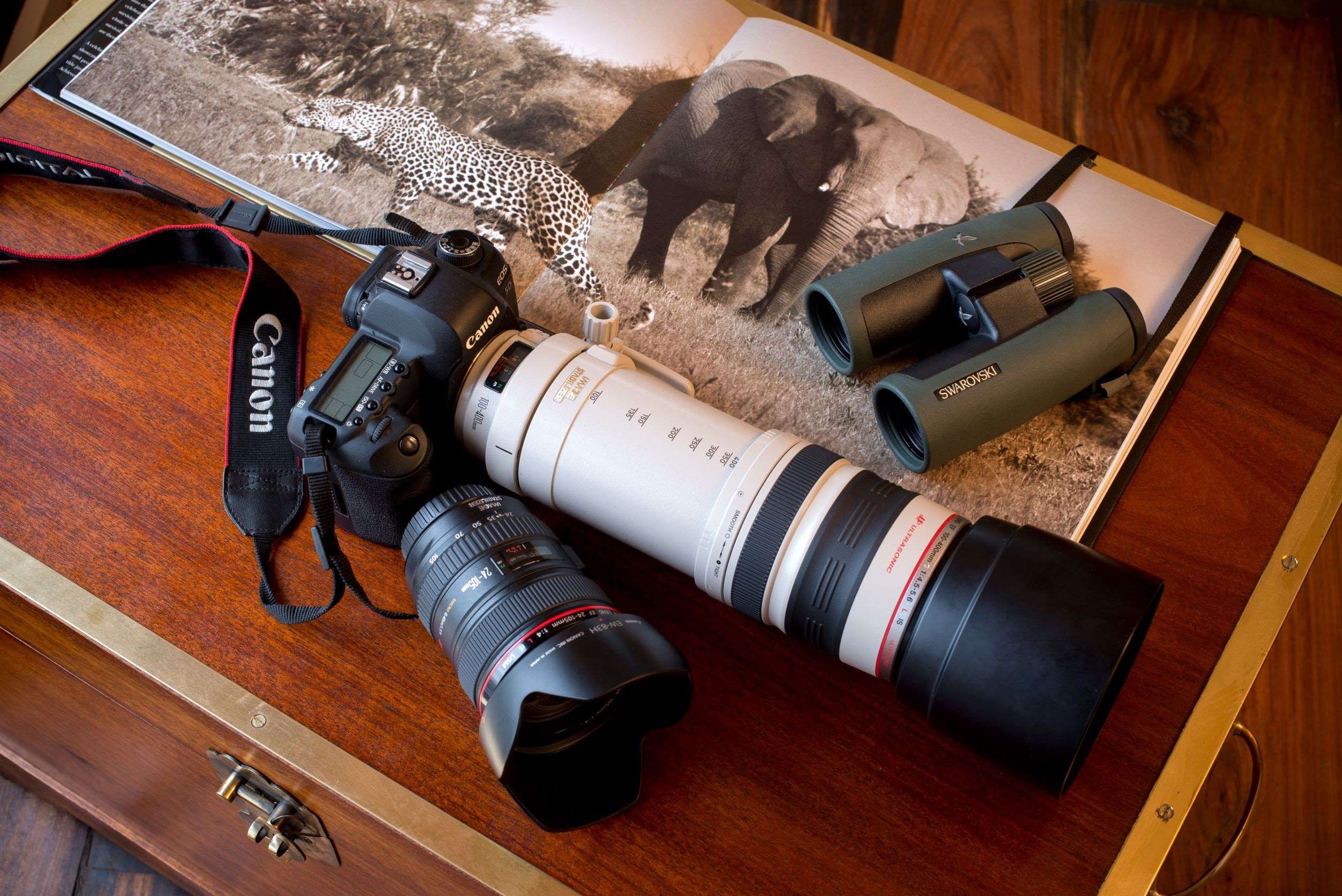
Travel light by hiring professional equipment at certain luxury lodges, Image Credit: Great Plains Botswana
A New Perspective
Photographic tourism in Botswana has grown significantly in value to the country’s visitor economy. Feeding into the slow safari movement, photographers like to spend their time at sightings, understanding the animal’s behaviour to capture it best.
They seek to gain an understanding of wildlife, making for a rewarding and enriching safari experience to share with the world through their work. It’s an activity for all ages and all skill levels to enjoy, making it an excellent enhancement to any safari.
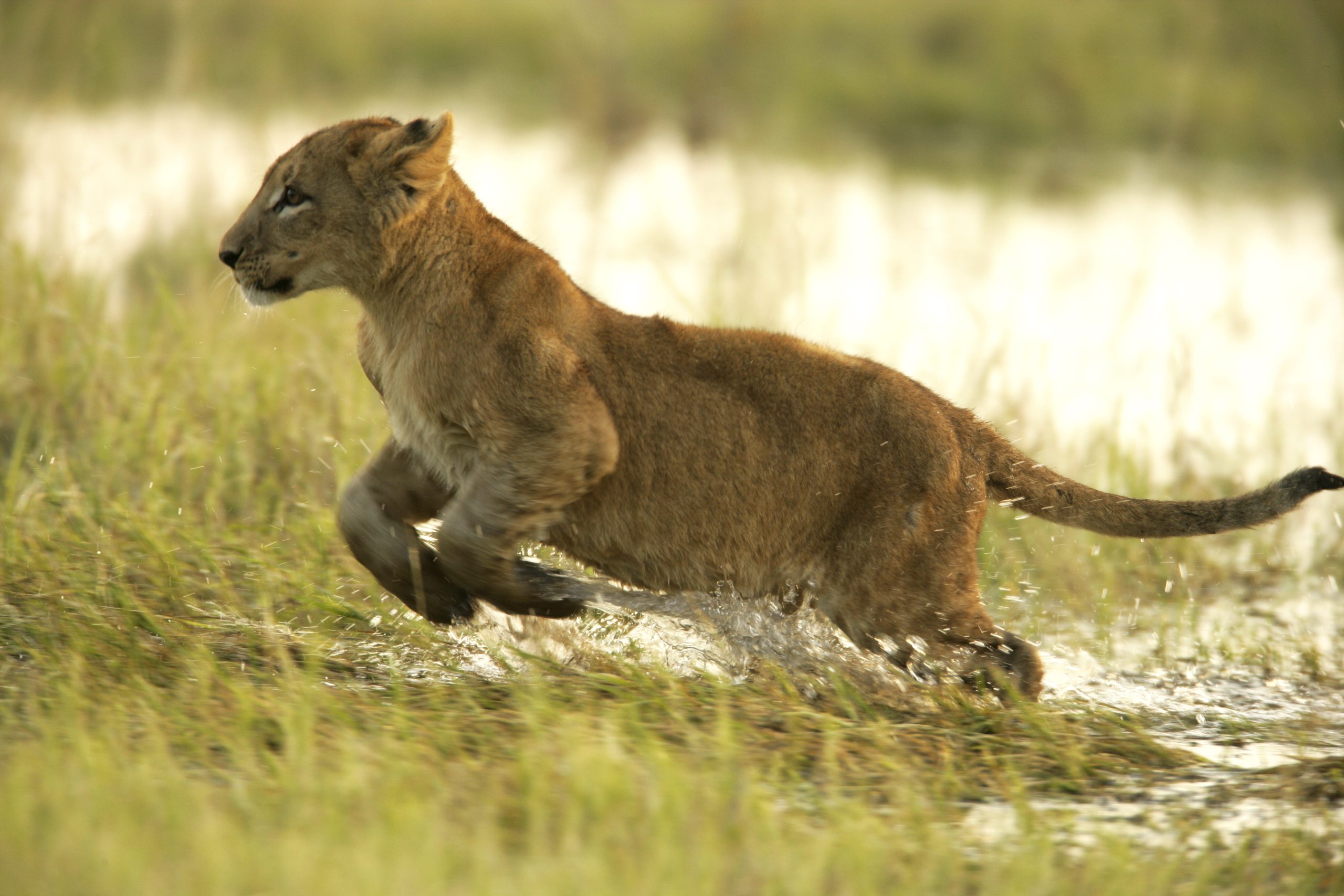
Freeze your safari highlights by capturing it on camera, Image Credit: Beverly Joubert | Duba Plains
Experience Your Own Wildlife Photography Safari
Rhino Africa’s Travel Experts know the best places to stay for the ultimate wildlife photography safari. Reach out to them to start tailoring your dream African safari.
With decades of first-hand experience and being the world’s most-awarded luxury African safari company, you’ll be in the very best hands. Start planning today.
